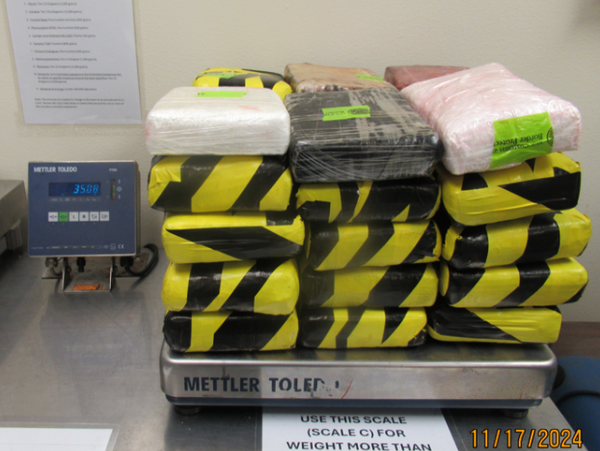
Amid incense and white lilies, thousands of mourners packed the town center of San Andrés Larráinzar, in Mexico’s mountainous southern state of Chiapas.
They had come to bid farewell to a beloved priest known as a peacemaker in a region racked by violence.
A half-open casket, draped with an embroidered stole, revealed the bandaged head of Father Marcelo Pérez , who was shot and killed while leaving mass in the city of San Cristóbal de las Casas early on Sunday.
“He didn’t just see the injustices towards the poor, he denounced them,” said the bishop Raúl Vera in Tuesday’s funeral mass, held in Spanish and Tzotzil, the victim’s Indigenous tongue. “He died because of his prophetic word.”
Pérez was a rare leader willing to speak against those responsible for abuses of the state’s Indigenous communities. Just a month before his death, he led a massive march to the state capital of Tuxtla Gutiérrez to demand peace.
“Amidst everything happening in Chiapas, it’s a blow to the struggles for peace and community organization,” said Jorge Santiago, a theologian and adviser to the San Cristóbal diocese.
Pérez is the first priest in recent history to be killed in the San Cristóbal diocese, but Chiapas has a long history of turmoil.
San Cristóbal was the epicenter of the Zapatista uprising in 1994, when thousands of masked Indigenous insurgents seized the city on New Year’s Day. The revolt, inspired in part by the liberation theology taught by local priests, and led by the Zapatista National Liberation Army, resulted in the largest land redistribution in Chiapas’s history, returning 250,000 hectares of land to Indigenous people.
But in the following years, the Mexican state funded paramilitary groups who launched a string of bloody reprisals against Zapatista communities and allies. On 22 December 1997, dozens of people from a pacifist religious community were slaughtered while at prayer in the village of Acteal.
Guadalupe Vásquez Luna, a survivor of the massacre, recalled that Pérez visited the community every month on the 22nd to commemorate the victims.
“They killed him because he was an obstacle, because what they want is to intimidate us,” said Vásquez Luna.
In recent years, the bloodletting has only escalated in Chiapas, whose location on the Guatemala border makes it a strategic territory for trafficking migrants, drugs and weapons.
Under former president Andrés Manuel López Obrador, Chiapas become yet another battleground for Mexico’s two most powerful organized crime factions, the Sinaloa cartel and the Jalisco New Generation cartel, which brought with them high-calibre weapons and new levels of aggression.
Entire villages were displaced, and more than 1,000 people have been forcibly disappeared in the last nine months. So fierce has the conflict become that earlier this year around 500 people fled across the border to find safety in Guatemala, reversing a historic flow of migration north.
“When we talk to people from other states, they say: ‘You’re experiencing what we went through 20 years ago,’” said Jose Luis Vizares, vicar of the Diocese’s justice and peace office. “We tried to prevent it, but it happened so fast.”
A skilled mediator, Pérez intervened in conflicts that the authorities avoided. Miguel Sánchez Diaz, a former mayor of the municipality of Bochil, recalled the priest’s intervention after a murder in 2021. “The prosecutor’s office couldn’t enter to recover the body. The father talked his way into the community and gave that person a holy burial,” he said.
Pérez knew that his work made him enemies. In 2015, he requested protection from the Swedish Fellowship of Reconciliation. The organization documented near-constant threats: men on motorcycles followed the priest around; the brakes and tires on his car were tampered with.
At the same time, he faced persecution from state authorities seeking to discredit his work. Prosecutors accused him of close ties to an Indigenous self-defense militia accused of forcibly disappearing 21 people during a conflict with an organized crime faction. An arrest warrant for him was issued but never executed.
The Inter-American Human Rights Commission ordered the Mexican government to protect the priest. Police cars kept watch on his home, and he carried a panic button. The measures weren’t enough, however. After he was about to drive away after mass on Sunday, a man walked up to his car window and shot him.
The federal government announced the deployment of 200 extra troops to Chiapas, and a suspect in the murder was arrested on Tuesday. But few expect an end to the violence.
After the funeral, the crowd pressed into the churchyard to bid a final goodbye. They weeped and tossed confetti and flower petals onto the casket. A brass band played a march, mourners wafted copal incense, and as the coffin was lowered into the earth, they shouted: “Father Marcelo lives!”
“The Mexican state wanted to kill him, but he’s a seed,” said Sánchez Luna. “Today we’re planting the body of Father Marcelo, and thousands will grow.”







